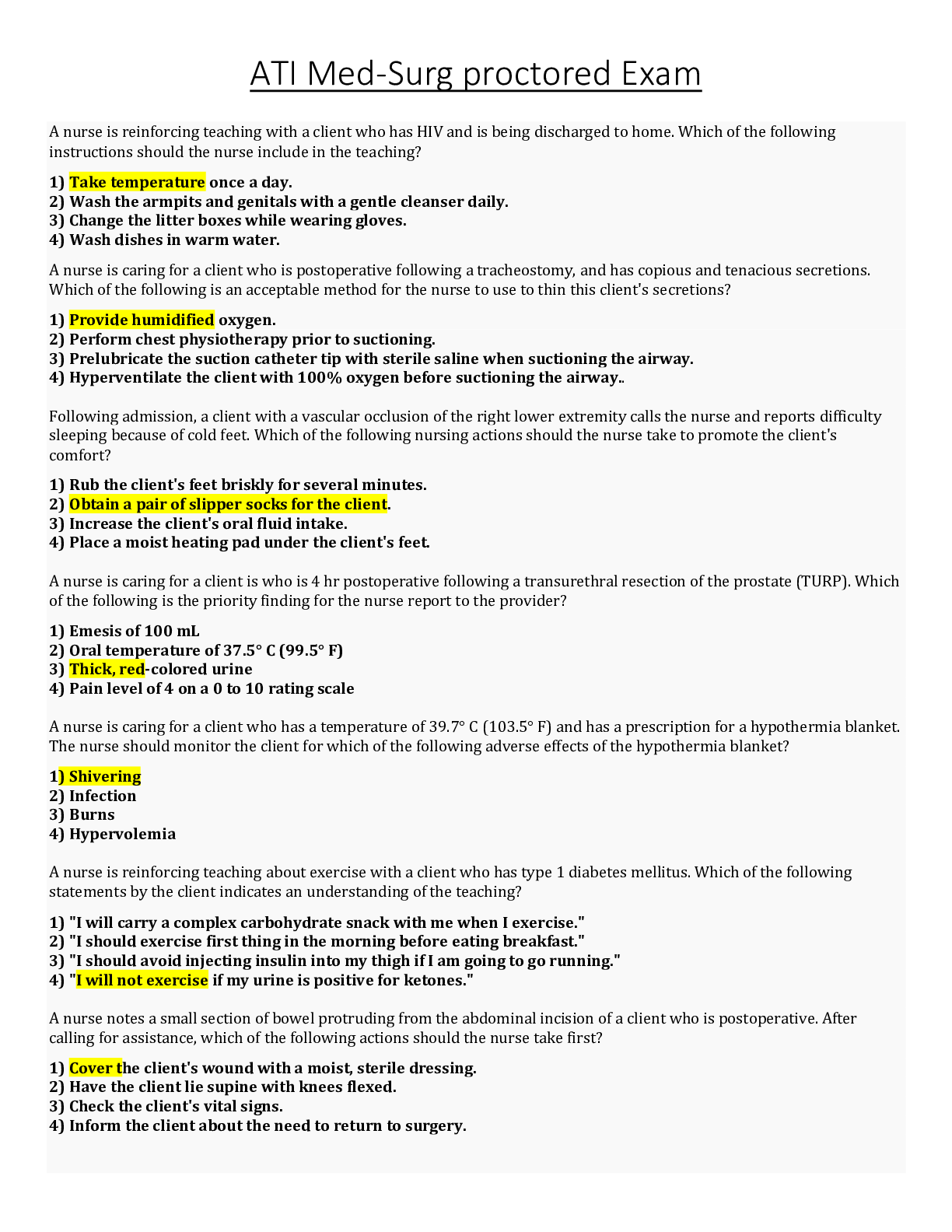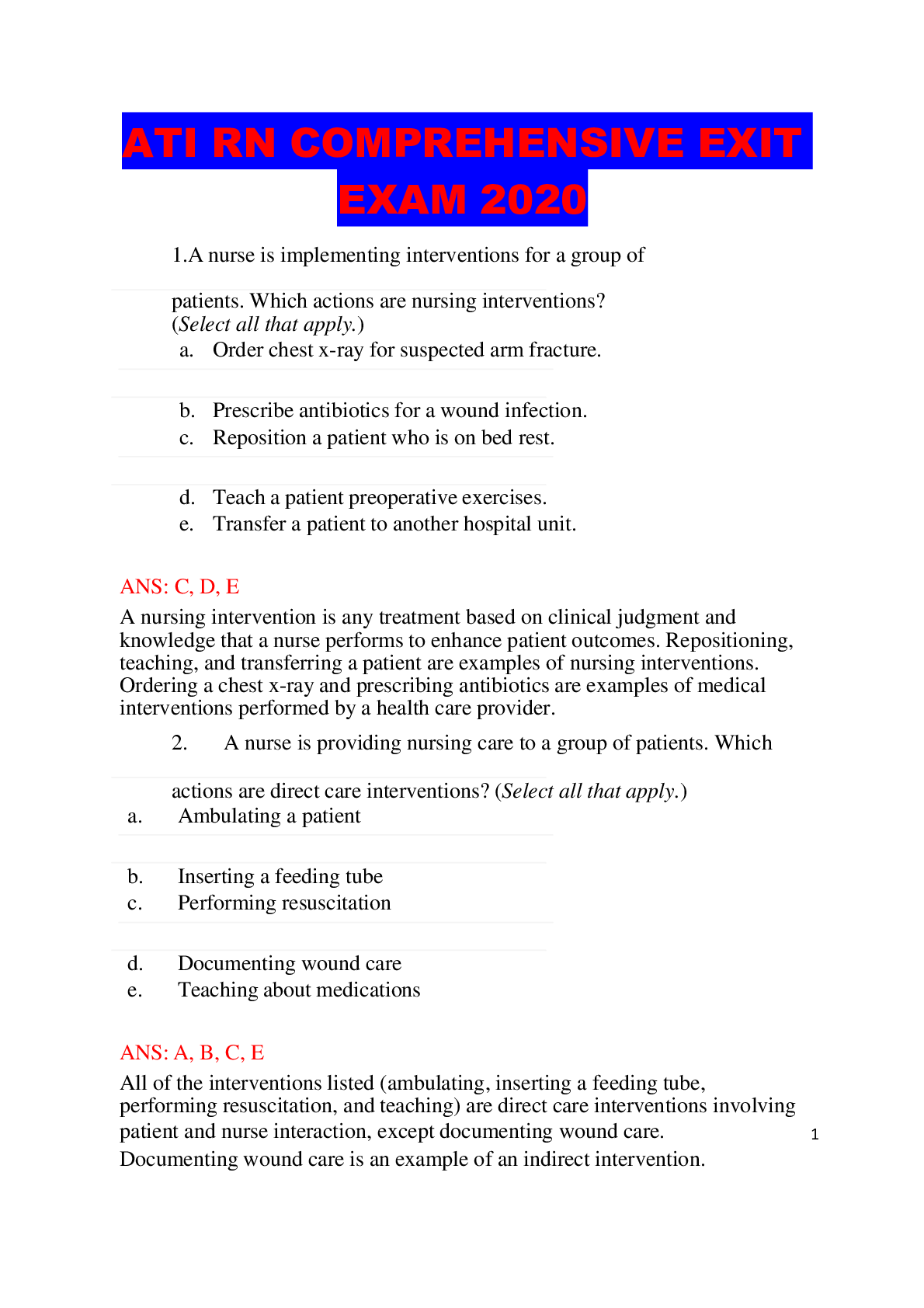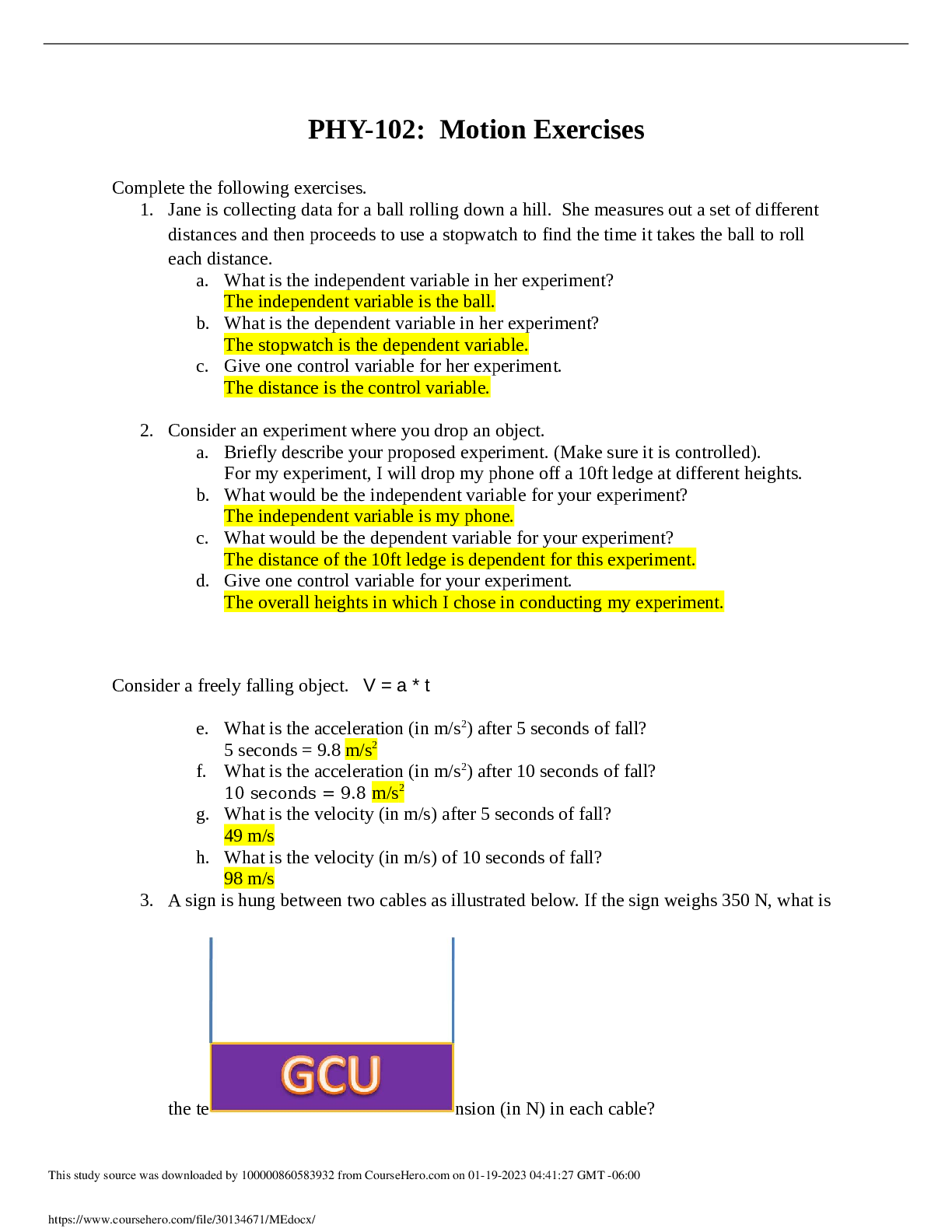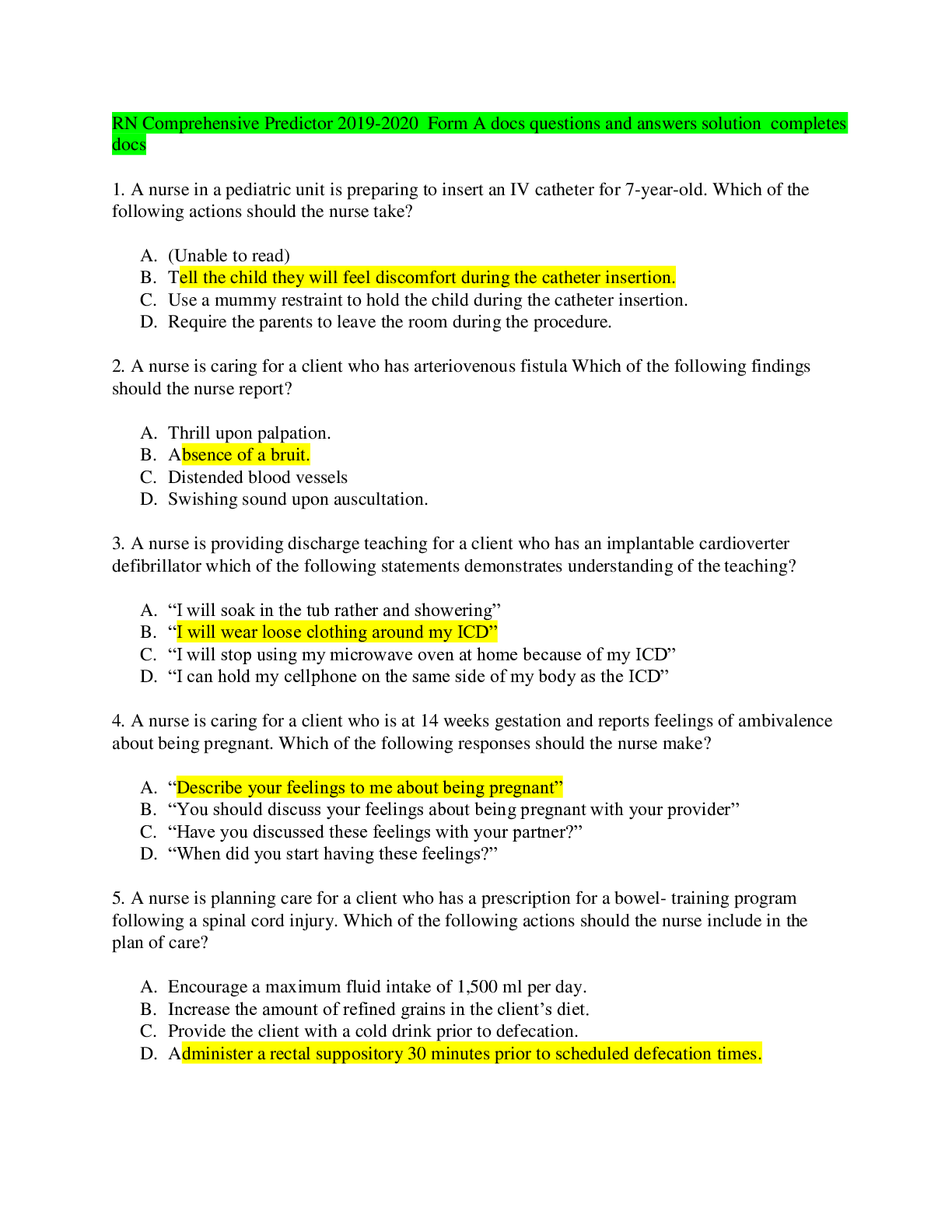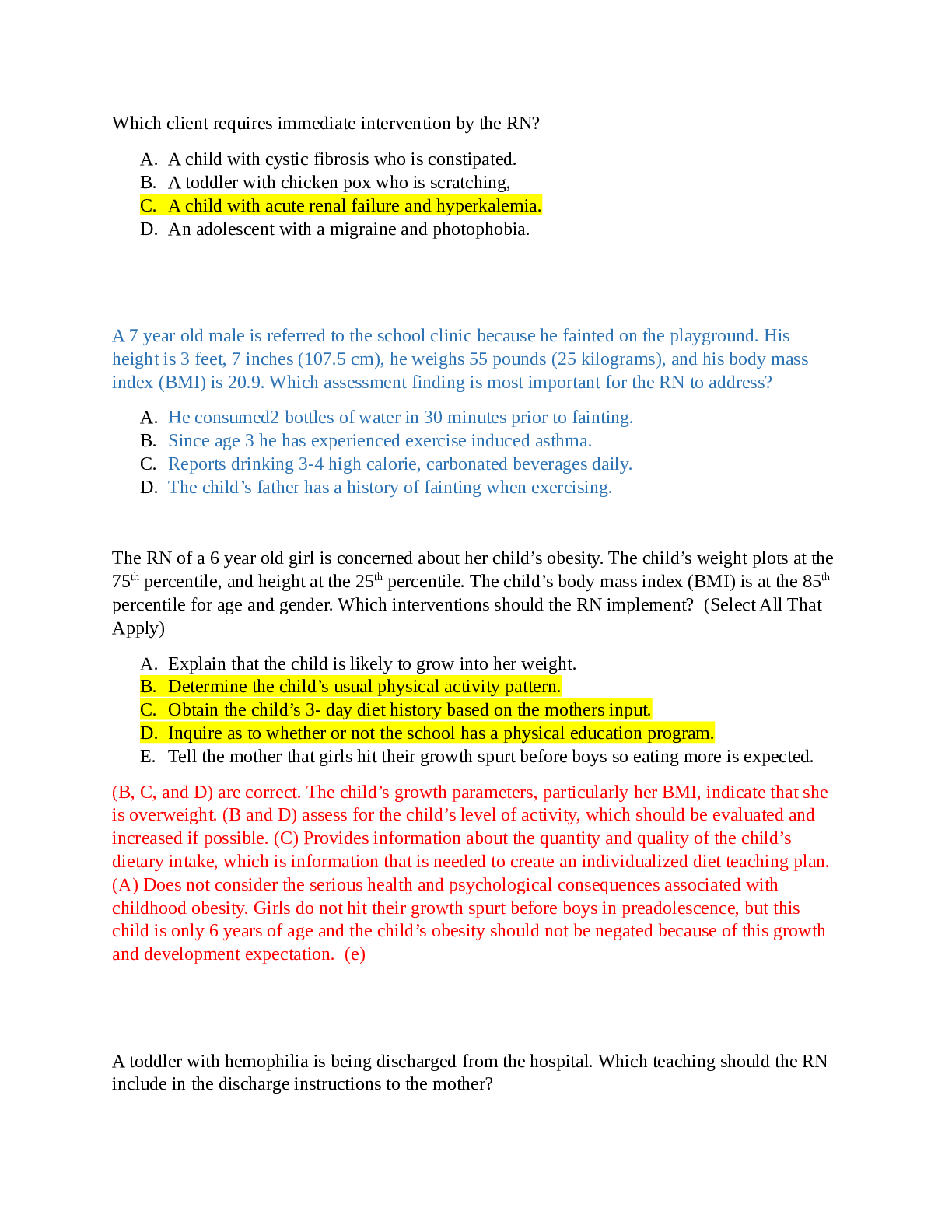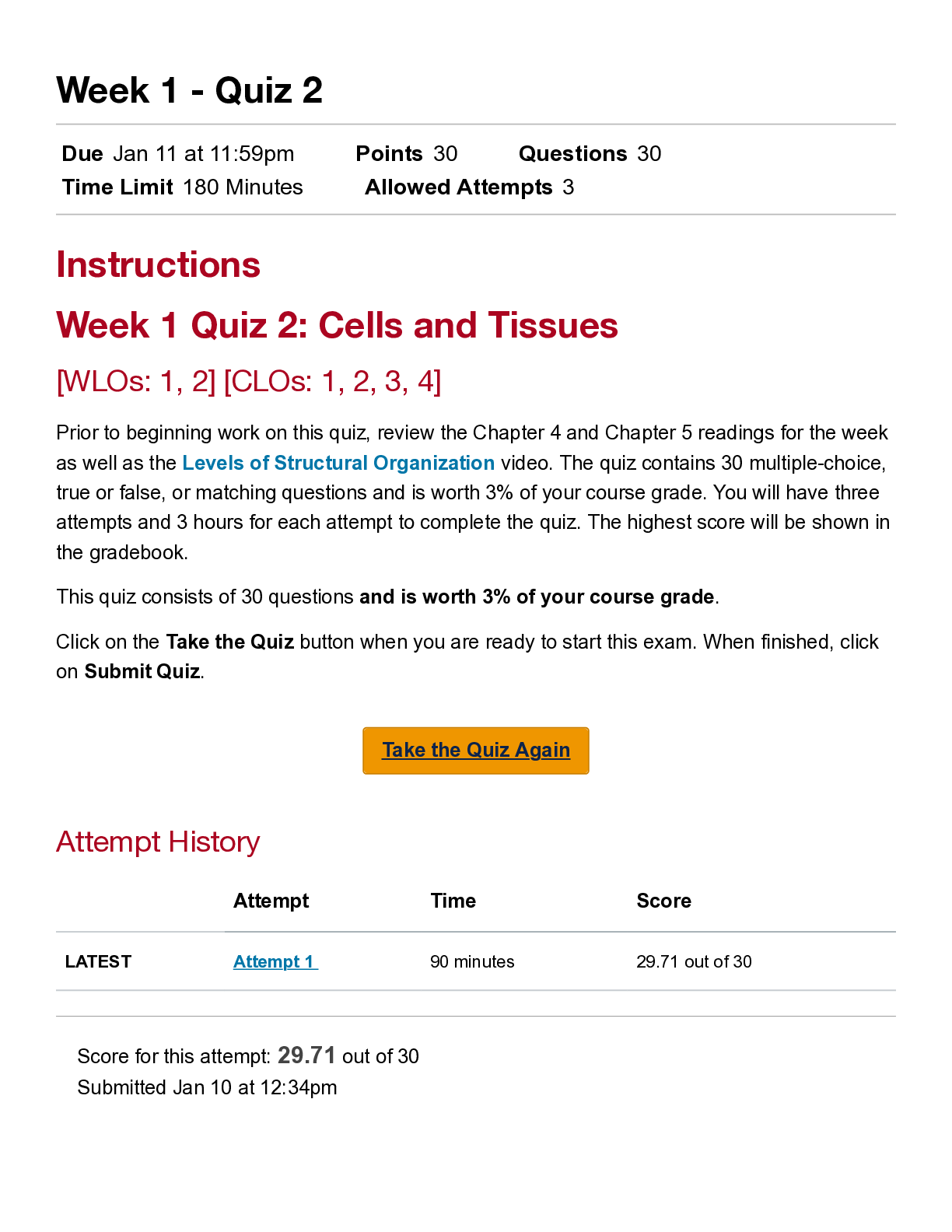NR-509-APEA-3P-Exam-Week-8 Test Prep with Complete Questions and Answers
Document Content and Description Below
NR-509-APEA-3P-Exam-Week-8 Test Prep with Complete Questions and Answers Question 1 A 3 year-old presents with a history of fever and cough over the past 24 hours. Findings on exam reveal: temperat... ure of 102°F, apical heart rate of 157 beats/minute, and respiratory rate of 40 breaths/minute. Tachypnea in this child is most likely related to Paradoxical respirations. the child's febrile state. Correct the child's age. an airway obstruction. Explanation: In children, heart and respiratory rates will increase with fever. For every degree of fever the respiratory rate will increase 3-4 breaths/minutes and the heart rate will increase 8-10 beats/minute. Question 2 When percussing the lower posterior chest, begin by: standing on the side rather than directly behind the patient. Correct: having the patient lie supine on the examining table. carefully palpating any area the patient has reported pain. using the ball or the ulnar surface of the hand. Explanation: When percussing the lower posterior chest, stand on the side rather than directly behind the patient. This position allows the ability to place the pleximeter finger more firmly on the chest and the plexor is more effective in making a better percussion note. If the patient is lying supine, the posterior chest will not be able to be percussed. Palpating painful areas is not percussion, so is not correct. Using the bony part of the palm at the base of the fingers or the ulnar surface is a technique used to detect tactile fremitus. Question 3 The palpation technique used to assess respiratory expansion of the chest is placing the hands on the eight or tenth ribs posteriorly with the thumbs close to the vertebrae, sliding the hand medially and grasping a small fold of skin between the thumbs. Then: ask the patient to cough and note chest expansion. ask the patient to take a deep breathe and note any delay in expansion during inhalation. Correct have the patient hold his breath for 15 seconds then note chest expansion. have the patient exhale forcefully noting expansion on expiration. Explanation: To assess the respiratory expansion of the chest, the examiner places his hands on the eight or tenth ribs posteriorly with the thumbs close to the vertebrae, slides the hand medially and grasps a small fold of skin between the thumbs then asks the patient to take a deep breath. The thumbs should move evenly away from the vertebrae during inspiration and there should be no delay in expansion. Question 4 When trying to differentiate between hemoptysis or blood streaked material, which one of the following observations is correct? Hemoptysis is seen frequently in infants, children, and adolescents with allergic rhinitis. Blood originating in the stomach is usually brighter than blood originating from the respiratory tract. IncorrectHemoptysis is common in children with cystic fibrosis. Correct: Blood streaked material often originates from the gastrointestinal tract. Explanation: Hemoptysis is rare in infants, children, and adolescents, although common in those with cystic fibrosis. Blood originating in the stomach is usually darker than blood from the respiratory tract and may be mixed with food particles. Blood or blood-streaked material may originate in the mouth, pharynx, or less commonly from the gastrointestinal tract. Question 5 When percussing the chest in a patient who has left sided heart failure, the sound emanated would be: resonant. Correct dulltympany. Diffusely hyperresonant. Incorrect Explanation: A patient with left sided heart failure experiences increased pressure in the pulmonary veins causing congestion and interstitial edema. Percussion sounds emitted would most likely be resonant. Consolidation in the lungs produces a dull sound on percussion. Tympany (low-high pitched musical sound) is usually audible when percussing a distended abdomen or when a pneumothorax is present. Chronic obstructive lung disease produces diffusely hyperresonant sound on percussion. Question 6 The line that extends through the inferior angle of the scapula when the arms are at the sides of the body is the: mid vertebral line. scapular line. Correct: midclavicular line. mid-spinal line. Explanation: The line that extends through the inferior angle of the scapula when the arms are at the sides of the body is the scapular line. Question 7 A condition associated with a chronic cough that produces copious amounts of purulent sputum is most likely: tracheobronchitis. chronic bronchitis. Incorrectbronchiectasis. Correct: laryngitis. Explanation: An acute viral illness that presents with a burning retrosternal discomfort and a dry cough is tracheobronchitis. An acute, mild illness often associated with viral nasopharyngitis and hoarseness is laryngitis. The initial cough is dry and nonproductive but may become productive over time. A chronic bronchitis cough is characteristically productive with mucoid to purulent sputum and may be blood tinged. Bronchiectasis produces a chronic cough with sputum that is copious and foul-smelling. It may be blood tinged. Question 8 A patient who walked into the examination room, may be observed to be sitting and leaning forward in his chair. Lips were pursed during exhalation and arms are supported on the table. This position could be consistent with patients who have: pneumonia. chronic obstructive pulmonary disease. Correct: asthma. croup. Explanation: People who have chronic obstructive pulmonary disease experience shortness of breath and dyspnea. Breathing with pursed lips and use of abdominal muscles help reduce shortness of breath and dyspnea. Leaning forward while seated and having arms supported on the table facilitate breathing. This position is not characteristic of the other diseases....................................continues*****************download to score A [Show More]
Last updated: 2 years ago
Preview 1 out of 22 pages

Buy this document to get the full access instantly
Instant Download Access after purchase
Buy NowInstant download
We Accept:

Reviews( 0 )
$16.00
Can't find what you want? Try our AI powered Search
Document information
Connected school, study & course
About the document
Uploaded On
Feb 19, 2021
Number of pages
22
Written in
Additional information
This document has been written for:
Uploaded
Feb 19, 2021
Downloads
1
Views
270

